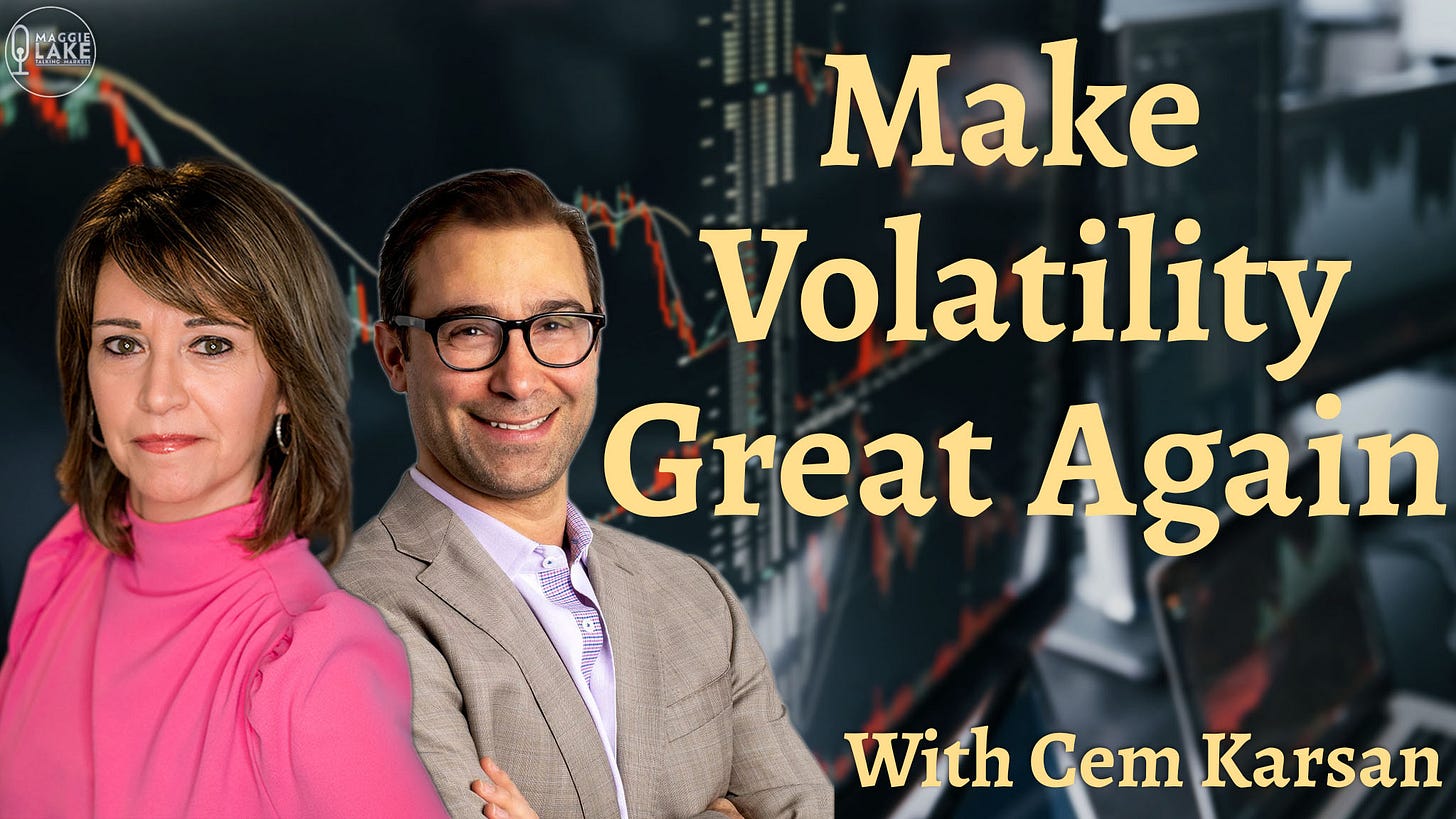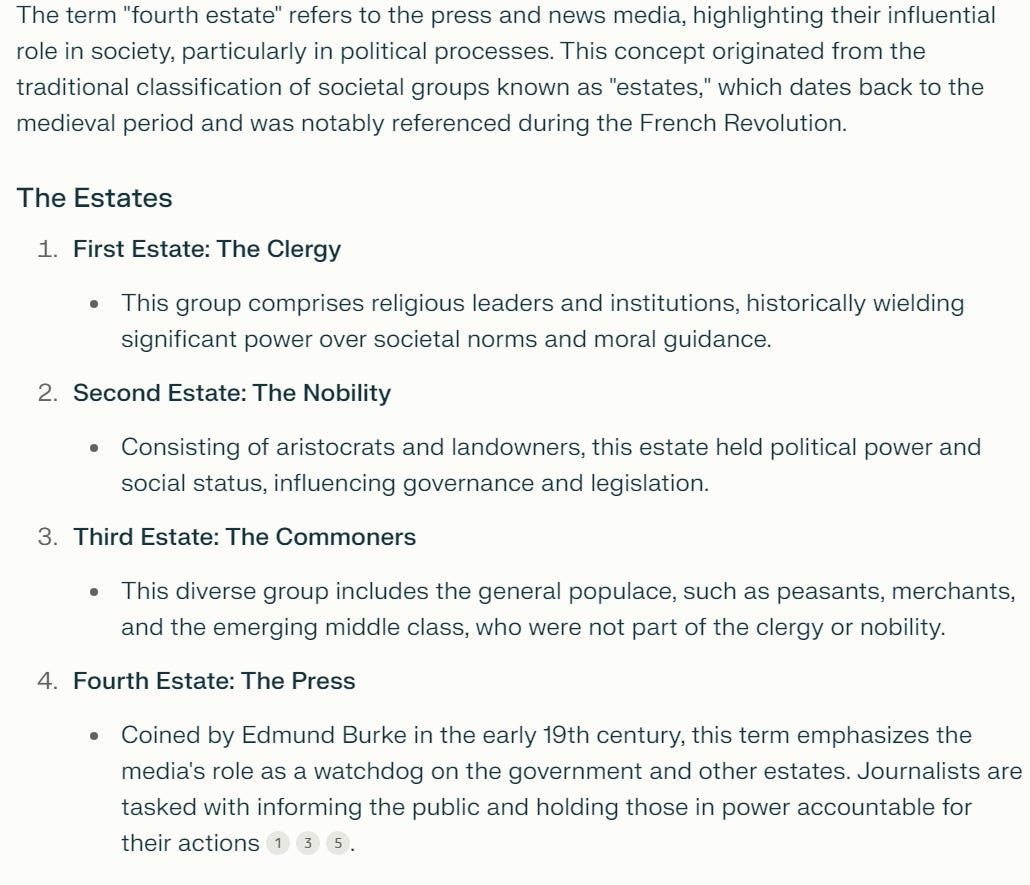Cem Karsan: "If You Think Yields Can’t Go to 6%, You’re Whistling Past the Graveyard”
The Kai Volatility founder on market chop, two paths out of it, rising bond yields, and markets as "the fifth estate."
Kai Volatility founder Cem Karsan joined me on Talking Markets on Friday (January 17) and laid out his outlook for 2025 and beyond. Spoiler alert: Even if you’re on the right side of the trade, this year is likely to whipsaw pretty much everyone.
Where We Are Now
Cem says January 13 was a short-term bottom, and from then until early February is a buying opportunity. So, all good, right? Well — maybe.
“We’re at a critical point,” Cem said. “The fact that we’re not continuing to push dramatically higher from here to 2-3 standard deviations… If we’re sitting here come Monday and not pushing to significantly new levels above this, that's a new flag and that you should be watchful for a resumption of decline. We need to hit new highs and by meaningful new highs from here if we are going to continue this rally.”
Big Picture Outlook for the First Half of 2025
“In the absence of some liquidity bazooka — like the Fed does a 180 and is surprisingly dovish — I think this market is likely to fade,” Cem said. “I’m not expecting anything critical in the first half of this year, but I am looking for a very wide chop.”
Cem thinks we will revisit lower lows, “likely to $5,500 in the S&P, down all the way potentially to $5,200. We probably see that in March. And that low will then probably lead to another massive rally near the highs again. So, a 10%+ drawdown from peak to trough, followed by a 10% rally.
💡“We really think the second half of this year, or approaching the second half of this year, is when we finally give up a topping process,” he said. “And that's what this is. Tops are a process, bottoms are an event. And our view is that this is broadly a topping process that we are starting now.”
2 Potential Paths for the Second Half of 2025
Cem says we are currently seeing a tech bubble paired with a “1968-style populist inflationary push” (Russell Clark is on that same page). That combo is “a very different thing than we’ve ever seen,” Cem said. “That can end one of two ways, but it doesn’t end well.”
A Blow-Off Top: If the Fed starts being dovish or is pressured into being dovish in the face of near market highs and a relatively hot employment picture, “they can keep the plates spinning,” Cem says. “That’s the blow-off top scenario, a vol up event. That feels like the most likely scenario, which is part of why I’m actually thinking it’s not the most likely.”
TL;DR: A liquidity-fueled 10-15 % rally and a blow-off top in September or January of next year.The Slower Descent: A scenario where you don’t get the liquidity bazooka, interest rates still kind of go sideways to up, and then the market itself takes down the economy, yields come down from there in the short term, and we enter some type of recession in Q3 or Q4,” Cem says. “I actually think that’s the most likely path.”
TL;DR: Markets take down the economy, recession happens, and we see a 30-40% decline in markets by March or June of next year.
Essentially, so much of how this plays out comes down to liquidity. “The question is, how long will they keep the plates spinning?” Cem says. “There is a mean reversion that tends to happen [at] these valuations.”
And even if you’re in the “right” trades for these two outcomes (for example long vol as you wait for what’s coming in the second half of the year), “It’s going to be hard to hold because you’re going to get whipsawed each way,” Cem says. “Just a lot of chop for six months. And then ultimately a topping process that leads to a bigger decline later this year or next year, depending on how this price action plays out.”
🚩🚩🚩Everybody’s At the Same Party
Talking Markets guests have been waving the “everybody’s at the same party” red flag for some time (Peter Boockvar, Brent Donnelly, Tom Thornton, among others).
“The numbers lay out that household equity allocation is dramatically higher than it's ever been,” Cem says. “So that's just fact. Something like 50 % of all assets are in stocks for your average household. It's, 47%, which is dramatically higher than we've seen historically. So yeah, people are very allocated. Everybody's at the same party, there's no doubt about that.”
💡“[These are] historically high valuations only rivaled by the tech bubble,” Cem said. “And you could argue that relative to the tech bubble, given where interest rates are, [this is] even more expensive in some ways.”
Yields on the Long End to 6-6.5%
It’d be pretty easy to get sucked into a head fake as yields edge lower… but Cem points out: “Things don’t move in a straight line.” Basically, every time this happens everyone says, inflation is transitory or moving lower, and then rates run again. Cem says the pullbacks are your opportunity to position for higher yields, rather than being a sustained change. “We've had ‘transitory inflation’ 4 times now in 4 years,” he said. “It happens every year.”
So, where does Cem see yields going? In the back half of the year or a little sooner, he sees yields on the long end going to 6-6.5%. “That’s only 1.25 higher from here,” he said. “After, by the way, we’ve moved over 4% higher over the course of 4 years. [If you don’t see that possibility], you’re whistling past the graveyard.”
💡If (or when) it happens, “it will break things,” Cem said. “And then authorities will rush in.”
Buckle Up: Regime Change?
“Most people, including myself, haven’t lived through a period that is different than the last 40 years,” Cem said. “The ability to control things with monetary policy exclusively was very easy because the Fed was dominant. We had a deflationary environment for 40 years because monetary policy policy drove a structurally deflationary period.”
But it also drove inequality, Cem says. And the generation it drove inequality for are “now coming to political dominance." They have “actively for 8 years voted for policies that help the middle class, as opposed to just maximizing GDP,” Cem said. (He is pretty much in lockstep with Russell Clark here.) “And if we're going to continue that, that is inflationary. It's not deflationary. You cannot have monetary policy pushing, you know massive stimulus while we are also pushing massive stimulus on the fiscal side.”
Markets as “The Fifth Estate”
Cem references an op-ed in Barron’s (link) that proposes markets as “fifth estate.” You’ve likely heard of the media as the fourth estate, but here’s a refresher from Perplexity.AI on the terminology:
Thank you, robot overlord.
💡“The fourth estate may not be as powerful anymore, but there’s a fifth estate and that’s markets,” Cem says, discussing the op-ed. “Markets have a lot of influence. I would argue that the markets are going to make it very hard to do some of the things that Trump et al are looking to accomplish over the next couple of years.”
To watch the full episode, right this way.
Enjoy,
Maggie
Important Disclaimer: It is crucial to remember that this article is for informational purposes only and should not be considered investment advice. Consult with a qualified financial advisor to assess your risk tolerance, investment goals, and determine if an allocation to oil aligns with your overall financial plan.







Excellent. Thank you, maggie and cem. Also, your email summaries are great to refer back to. Much appreciated